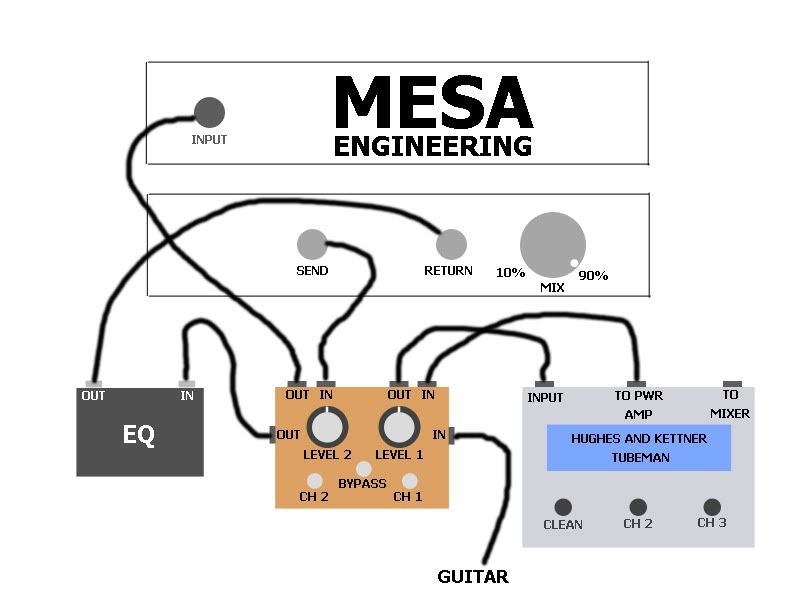VailAve,
I posted this a few years ago with a bit of a write up. It's a similar thing you're talking about but a bit more flexible. The setup below is actually a setup I've used (with those exact pedals).

The H&K Tubeman in the image can be any preamp, in your case an ADA. What I want to try soon are my Rocktron Piranha and Mesa Quad preamps through my Roadster head. Should be lots of fun.
The orange pedal in the image is actually a pedal I own. It's basically a 2x effects loop pedal that have their own level controls. You can switch either loop in or out or have both on. One of the loops also has a phase switch. This is the combination available:
1. Amp preamp
2. External preamp
3. Combined preamps
4. Clean guitar signal blend into either loop or both loops (via a toggle switch on the pedal)
5. Bypass (only guitar signal straight into power amp)
When you think about the above combinations, each preamp also has it's own channels. So think about this combination if you have a Roadster amp plus say the H&K unit:
1. Amp's Ch 1
2. Amp's Ch 2
3. Amp's Ch 3
4. Amp's Ch 4
5. Amp's Ch 1 + H&K Ch 1
6. Amp's Ch 1 + H&K Ch 2
7. Amp's Ch 1 + H&K Ch 3
8. Amp's Ch 2 + H&K Ch 1
9. Amp's Ch 2 + H&K Ch 2
10. Amp's Ch 2 + H&K Ch 3
11. Amp's Ch 3 + H&K Ch 1
12. Amp's Ch 3 + H&K Ch 2
13. Amp's Ch 3 + H&K Ch 3
14. Amp's Ch 4 + H&K Ch 1
15. Amp's Ch 4 + H&K Ch 2
16. Amp's Ch 4 + H&K Ch 3
17. H&K Ch 1
18. H&K Ch 2
19. H&K Ch 3
20. Straight guitar signal
Insane number of channels available. Plus you have the other modes to play with!
That looper pedal is a really neat pedal that I bought years ago. I bought it off ebay but I can't recall who made it. The guy also made other unique pedals. I don't think he makes / sells any more (I haven't seen this pedal on ebay in a few years).
Here's food for thought:
1. Convert the amp's effects loop into serial.
2. Add a 3x or 4x (or 5x) effect loop pedal as shown in the image above. This basically converts the amp's serial loop into a multi-loop (multi-parallel loop). If each loop has it's own level control (as shown above), even better.
3. Add multiple preamps or EQ's (or other pedals)
Things to keep in mind:
1. Phase switches are required for the loops to make sure all preamps are not out of phase.
2. One loop must be free to connect to amp's input and send jacks.
Plenty to think about if you want to have some fun. Or go mad :lol:
-B


